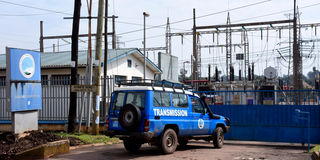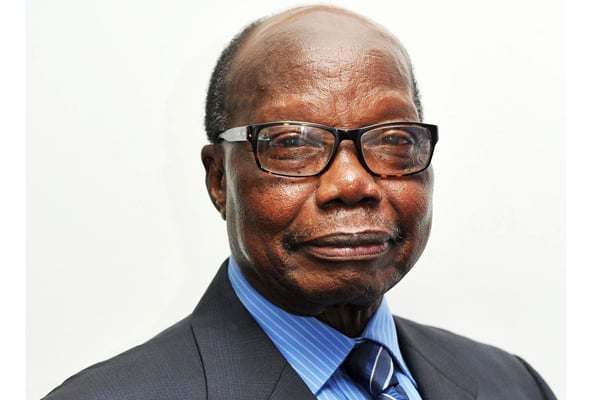Prime
Shs1.4 trillion shelled out on ghost electricity

Uganda Electricity Transmission Company Limited (UETCL) offices in Lugogo, Kampala. UETCL has continued to pay significant amounts relating to deemed energy purchases since around 2004. PHOTO/ISAAC KASAMANI
What you need to know:
- Despite going unconsumed since it was never sent to the national grid, the electricity generated by independent power producers, was deemed to have been consumed.
Uganda has over the last 16 years paid at least Shs1.4 trillion to 13 private power generation firms for power that was never consumed.
Despite going unconsumed since it was never sent to the national grid, the electricity—which was generated by independent power producers (IPPs) with which the Uganda Electricity Transmission Company Limited (UETCL) has running power purchase agreements—was deemed to have been consumed. It was consequently technically referred to as deemed energy.
READ
The deemed energy costs of Shs87.7b in regard to 13 power purchase agreements (PPAs) are spotlighted in the report of the Auditor General for the financial year ended June 30, 2021.
Whereas the Auditor General’s report was in reference to only money paid out to the 13 IPPs in the Financial Year 2020/2021, the same report indicated that payments for the said deemed energy had been going on for a while.
“I noted that UETCL continues to pay significant amounts relating to deemed energy purchases,” the Auditor General noted.
Sources within UETCL have since told Saturday Monitor that the government has been paying for the deemed energy since around 2004.
Must-pay agreements
Saturday Monitor has established that all the PPAs that the government entered into have what was technically described as a “take or pay” clause that binds government to pay for all power generated by the IPPs. This is regardless of if such power was not evacuated from the generation plants.
While this is bound to raise eyebrows, Ms Pamela Nalwanga Byoruganda, the UETCLspokesperson, told Saturday Monitor that the agreements were signed at a time when Uganda was in crisis.
“The PPAs that we signed at the time when [Uganda was] getting burdened by load shedding and still had power deficits,” Ms Byoruganda said.
Ms Byoruganda added that the “take or pay” provision was necessary to attract investments to the energy sector.
“The only funders that were willing to come and build generation plants would only agree to either you take all that we are going to produce for you or you pay for it,” she revealed, adding: “So we signed these agreements as an incentive to invite investors to come in because it would make it easier for them to borrow money knowing that even if the power was not consumed, it would still be paid for.”
Between 1996 and 2006, power generation at both Nalubaale and Kiira dams in Jinja fell to about 120 megawatts against a demand in the region of 360 megawatts. That compelled the power distribution firm, Umeme, to introduce 12- to 24-hour power outages.
The government allowed the opening of thermal power plants in Lugogo, Mutundwe, Namanve and Jinja, but these sent generation costs through the roof. They eventually precipitated a hike in tariffs and introduction of subsidies. The government paid out as much as Shs229b in power subsidies in the Financial Year 2006/2007 alone.
The situation only turned around after the commissioning of the Bujagali Power plant in October 2012.
That was followed by the commissioning of 13 mini hydro power stations, including Mubuku One, Bugoye in Kasese, Kabalega in Hoima, Kanungu in Kanungu, Mpanga in Kamwenge and Adekokwok in Lira.
Ms Byoruganda now says government has since taken a decision to revisit all agreements with a view of striking out the “take or pay” clause.
“Now that generation has increased, including that at the government-owned dams, the new agreements that we are signing do not have the “take or pay” clause. That should bring down the issue of deemed energy” Ms Byoruganda said.
No infrastructure
The Auditor General’s report indicates that whereas the power purchase and other implementation agreements committed the government to the construction of infrastructure to evacuate the power from generation plants to the distribution lines, the required infrastructure has never been put in place.
The power producers, our sources revealed, have, therefore, been capitalising on clauses that require the government to pay for the power even when it has not been evacuated.
Such developments have raised questions around why UETCL could have made such commitments without first establishing whether there would be money to cater for the erection of the required infrastructure.
Ms Byoruganda, however, says some of the infrastructure should have been put in place by the Uganda Electricity Distribution Company Limited (UEDCL).
The two agencies, she argues, often do not operate at the same pace or even obtain project funding at the same time.
“Financing for generation might come in faster than the financing to build a line. An investor may come and see an opportunity to build a dam, but someone else has to plan on evacuating that power,” she explained.
“Because we do not use government funding anymore, we have to go and source for financing to build an evacuation line. The two processes do not usually move at the same pace,” she added.
Impact on tariffs
President Museveni has since June 2016 pushed for a reduction in the cost of power to at least five cents for the manufacturers and six cents for domestic consumers. To his consternation, the Auditor General’s report indicates that this cannot happen.
According to the report, payments for deemed energy and other losses are financed through the electricity tariff system. This means the cost is passed on the final consumer.
On April 6, the Electricity Regulatory Authority (ERA) released a new tariff structure which put the average cost of domestic tariffs at $21 cents per kilowatt hour. The same category of consumers can also benefit from the lifeline tariff, which stands at 7.6 cents per kilowatt hour, and the cooking tariff which stands at $11.64 per kilowatt hour.
Commercial consumers are required to pay $16.4 cents per kilowatt hour; $12.4 cents for medium scale industries; $10 and $9.7 cents for Block One and Block Two consumers in the large industries category; $85 as well as $7.7 cents in the extra-large industries category; and $10.5 cents for street lighting.
Whereas the new tariffs were said to be intended to support consumers “to recover from the effects of the Covid-19 pandemic”, Mr Jim Mwine Kabeho—a member of the Board of Directors at the Uganda Manufacturers’ Association (UMA)—says the tariffs still do not compare favourably with those of others in the region.
“The problem is that the cost of power in Uganda, compared to countries such as Ethiopia and Kenya, remains a challenge. 10 to 11 cents per kilowatt hour puts manufacturers here at a disadvantage. Government needs to negotiate with power producers so that it goes down to between $5 and $6 cents per kilowatt hour,” Mr Kabeho reasons.
Julius Wandera, the director of corporate and consumer affairs at ERA, however, argues that comparisons between tariffs in the region are misleading given that some of the countries in the region heavily subsidise the energy sector.
“You cannot do a comparison of tariffs unless you use cost reflective tariffs. Tanzania, for example, subsidises their tariffs by up to 70 percent, Kenya by 15 percent, Burundi heavily subsidises, while Rwanda does not subsidise. A comparison is, therefore, likely to be misleading,” Mr Wandera says.
READ MORE




